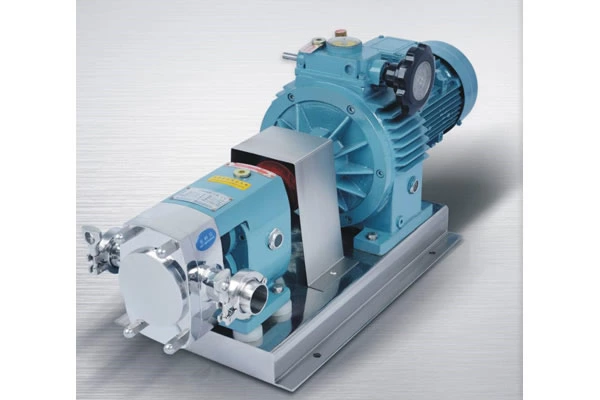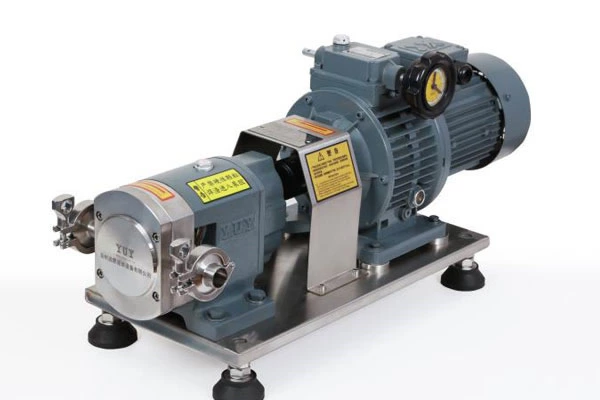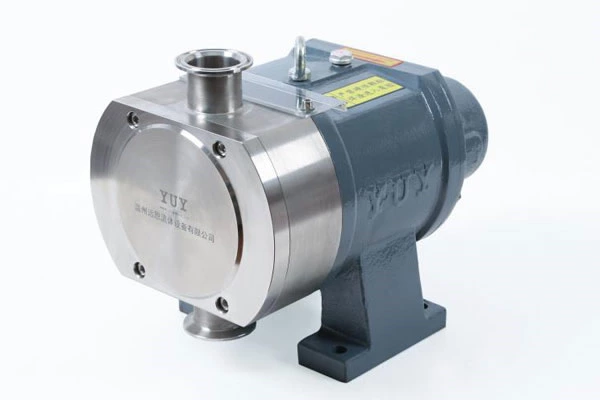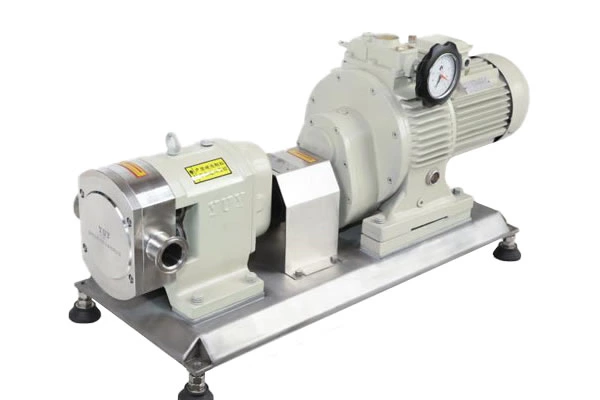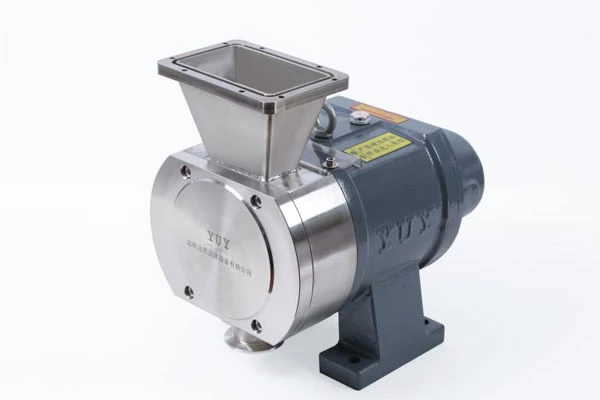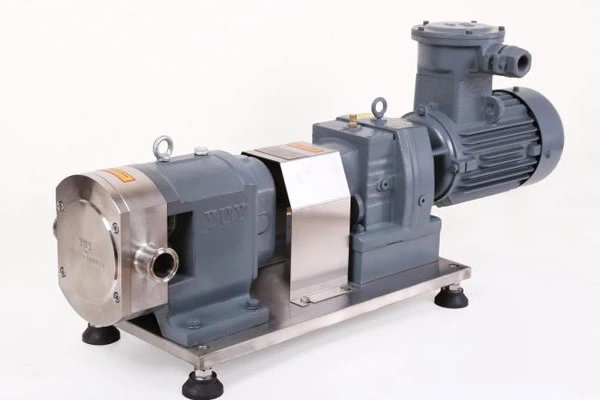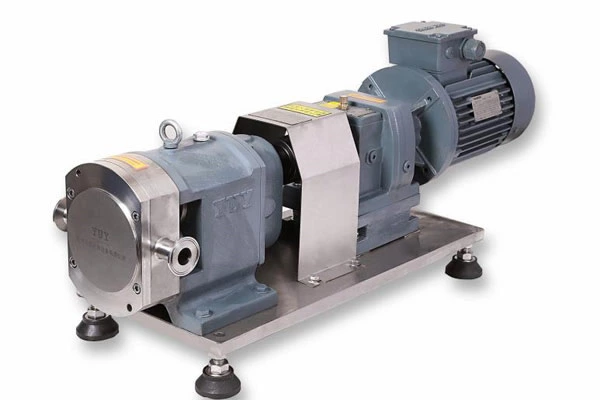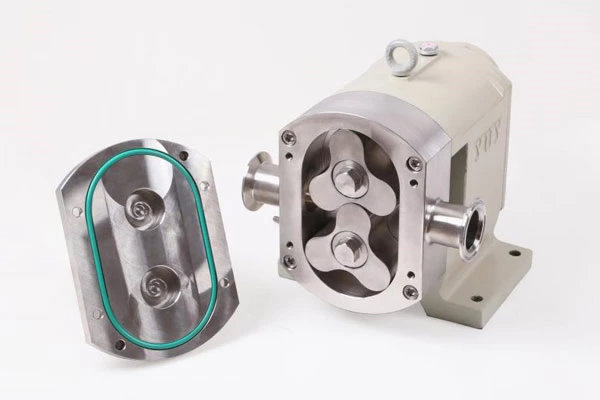Common Faults Of Sanitary Rotary Vane Pump Head
The working principle of Sanitary Rotary Lobe Pump is: before starting the water pump, fill the pump casing with water (or there is water in the pump casing itself). After starting, the impeller rotates at high speed to make the water in the impeller groove flow to the volute. At this time, a vacuum is formed at the inlet, so that the water inlet check valve opens, and the air in the suction pipe enters the pump and reaches the outer edge through the impeller groove. The sanitary rotary vane pump has the advantages of compact structure, convenient operation, stable operation, easy maintenance, high efficiency, long life, and strong self-priming ability. The pipeline does not need to be installed with a bottom valve. Before working, it is only necessary to ensure that there is a certain amount of lead liquid stored in the pump body. Different materials of sanitary rotary vane pumps can be used for different liquids.
1. Motor part
(1) No response after turning on the power. Most of them are caused by the power plug, power lead wire and motor winding circuit breakage.
(2) Difficult to start or cannot start, accompanied by a "buzzing" sound. During maintenance, you can use a small bamboo piece to quickly move the fan blades in the direction of rotation. If the motor starts to run quickly, it means that the starting capacitor or starting winding is damaged. The capacitor of the same capacity should be replaced or the starting winding should be repaired; if the motor is stuck, it is mostly a mechanical failure of the motor and pump head, such as bearing damage, impeller jamming, etc.
(3) The motor can run, but the speed is slow, and the casing is overheated and has a burning smell. Most of the time, it is caused by a short circuit in the motor winding. The motor should be disassembled and repaired by welding, jumper wires, isolation, rewinding, etc. according to the damage.
(4) There is loud noise and vibration during operation. Most of the time, the bearing is damaged or the bearing and the casing are not properly matched. The motor needs to be disassembled for inspection. If the bearing is damaged, it should be replaced; if the bearing "runs out of the circle", the matching surface of the pump casing can be engraved; if the bearing "runs out of the circle", the worn part of the motor shaft can be engraved. If the wear is serious, it can be repaired by first surfacing and then turning.
2. Pump head
(1) The motor runs normally but the water output is small or no water is output at all. In this case, the seal of the water pump should be checked first. When checking, the power plug should be unplugged first, the water inlet should be blocked by hand, the water pump should be filled with water, and the outlet should be held with mouth and blown into it to observe whether the pump head is leaking. The leaking part is the seal damage. Common fault parts are the water inlet pad, water outlet pad, and impeller cover pad, which should be replaced during maintenance. If there is no full water phenomenon, it is mostly due to impeller damage, corrosion and wear of the water retaining wall between the water inlet chamber and the water outlet chamber, wear of the pump head water retaining wall, increase in the gap between the impeller and the pump casing, etc. The impeller and pump casing should be replaced. When replacing the impeller, pay attention to thoroughly remove the residual copper blades in the pump to avoid damaging the new impeller again.
(2) The casing is electrified. Most of the time, it is caused by water seal damage and water seeping into the motor through the motor shaft, which deteriorates the insulation performance of the motor. It can be repaired by replacing the water seal and drying the motor. It should be noted that because the water pump is in contact with water for a long time and works in the open air, it is very easy to be affected by moisture and cause the insulation performance to deteriorate. In order to ensure personal safety, the sanitary rotary vane pump should be reliably grounded; in winter, measures such as draining the water in the casing and keeping warm should be adopted to prevent the casing from freezing.
